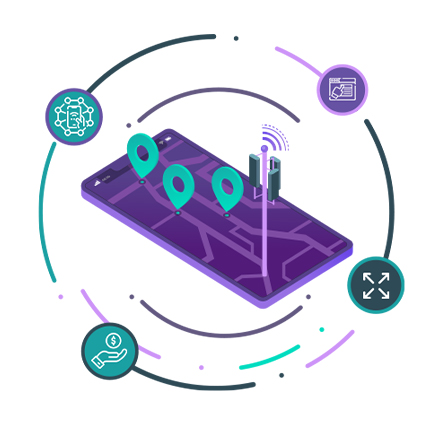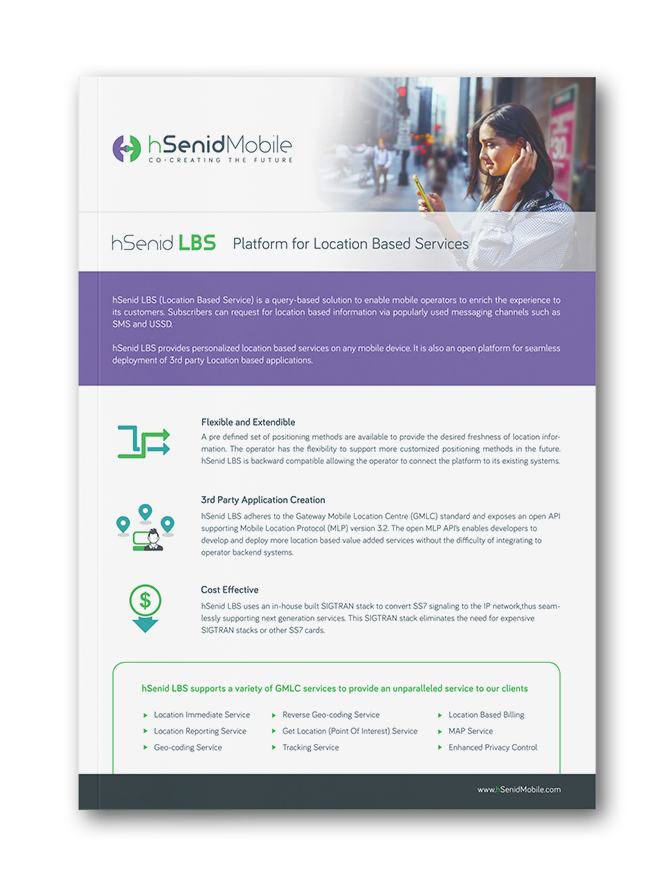In today’s fast-evolving digital landscape, telcos are not just infrastructure providers—they are becoming innovation hubs. As customer expectations shift towards hyper-personalized, real-time services, telcos need to unlock new value through technology. One of the most potent, yet underutilized, tools in their arsenal is Location-Based Services (LBS). By integrating intelligent LBS mobile solutions, telecom providers can create distinct competitive advantages across customer experience, revenue generation, and enterprise partnerships.
This blog explores how telcos can harness LBS to sharpen their edge and offer contextual, location-aware services that resonate deeply with subscribers and business clients alike.
What Is an LBS Mobile Solution?
At its core, a lbs mobile solution uses a combination of mobile network data and positioning technologies to deliver real-time or near-real-time services based on user location. These services are accessible on any mobile device and can be delivered through familiar communication channels like SMS and USSD.
With a powerful LBS platform like hSenid LBS, telcos can deploy services such as:
- Location Immediate Service
- Geo-coding and Reverse Geo-coding
- Point of Interest (POI) retrieval
- Location-Based Billing
- MAP and Tracking services
- Enhanced privacy control
Such a solution is both flexible and extendible, allowing telcos to easily scale based on user demand and integrate with third-party apps using open APIs like the Mobile Location Protocol (MLP) 3.2.
Transforming User Experience Through Personalization
One of the clearest advantages of LBS mobile technology is the ability to personalize services based on real-world context. Instead of treating all subscribers equally, operators can deliver value when and where it matters most.
For example, a user searching for the nearest coffee shop could send a query via USSD or SMS. The LBS platform identifies the user’s location and returns nearby recommendations instantly. This doesn’t just delight the user—it builds loyalty by meeting them in the moment of need.
In low-bandwidth or developing regions, where smartphone penetration may be limited, offering location-based services via SMS or USSD can drastically increase accessibility and relevance. It democratizes digital services for all, regardless of device type or internet availability.
Driving Revenue with Location-Based Advertising
LBS mobile solutions are also a boon for revenue generation. Telcos can enable hyperlocal advertising models, where businesses pay to reach users based on their location. This form of precision targeting is far more cost-effective and impactful than traditional broadcast advertising.
Consider a scenario where a restaurant wants to promote a lunch deal. Using LBS, they can target people within a 1 km radius of the location around noon, driving timely foot traffic and higher conversions. Telcos become the platform that powers this interaction and earns a share of advertising revenue in return.
As shown in the example on page 2 of the uploaded brochure, a marketing manager at KFC could send promotional alerts to people specifically within Hudson city limits, triggering real-time engagement opportunities.
Empowering Enterprise Customers with LBS APIs
Enterprises today demand agile platforms that plug easily into their digital infrastructure. With open APIs built on GMLC and MLP standards, telcos can offer LBS as a service to third-party developers and businesses. This makes telcos more than just service providers—they become enablers of innovation.
Industries like logistics, retail, emergency services, and transportation can benefit enormously from such integrations. For example, a ride-hailing service could use telco-powered LBS to identify nearby drivers more reliably, even in areas where GPS accuracy drops. A delivery company could track real-time driver positions without needing to build its own infrastructure.
By exposing programmable APIs and maintaining backward compatibility, telcos also ensure that LBS can evolve, without disrupting existing systems.
Cost-Efficient Architecture with Built-In SIGTRAN
Traditionally, supporting services like LBS meant high capital expenditure, especially with signalling infrastructure like SS7. However, hSenid LBS solves this challenge with an in-house SIGTRAN stack that allows telcos to convert SS7 signalling to IP, eliminating the need for costly SIGTRAN cards or third-party stacks.
This dramatically reduces cost while enabling seamless migration to next-generation services. Operators can build modern, flexible platforms without incurring heavy hardware expenses, allowing them to compete with digital-native providers and OTT platforms more effectively.
Real-World Use Cases
- Location-Based Information Services:
Customers can use LBS to find nearby ATMs, fuel stations, taxi stands, tourist locations, or food outlets. These services are especially popular among prepaid users and those in emerging markets who rely heavily on USSD for quick access to information. - Emergency and Safety Applications:
In disaster scenarios or for law enforcement purposes, telcos can provide accurate location data to identify affected users or dispatch emergency services. LBS can also support women’s safety apps that alert authorities in case of distress, by sharing live coordinates. - Enhanced Customer Insights:
By analyzing location data (with consent), telcos can better understand subscriber behavior—such as daily commuting patterns, peak activity zones, or preferred service locations. These insights can inform network expansion, marketing campaigns, and loyalty program optimization. - Location-Based Billing:
Telcos can introduce variable billing based on user geography. For instance, calls made in a partner retail zone could be offered at discounted rates, incentivizing subscribers to engage with brand partners more frequently.
Future-Proofing Telco Strategy
As 5G, IoT, and smart cities continue to evolve, location awareness will become a cornerstone of digital interaction. Telcos that invest in LBS now are not just meeting current demand—they are laying the groundwork for the next decade of intelligent services.
Whether it’s autonomous vehicles relying on real-time location feeds or retailers offering AR-based in-store navigation, LBS will be the connective tissue that enables real-world context in the digital experience.
Conclusion
To remain competitive in a landscape increasingly dominated by digital-first players, telcos must evolve beyond connectivity. By embracing LBS mobile solutions, they can offer real-time, location-aware services that engage customers, empower partners, and open up new revenue streams.
hSenid LBS , with its modular architecture, cost-efficiency, and open APIs, provides a future-ready platform that telcos can adopt to quickly leap ahead. From hyperlocal marketing to scalable enterprise applications, location-based services are not just a nice-to-have—they are a strategic necessity. Explore how you can bring smarter, more contextual services to life for your customers.








